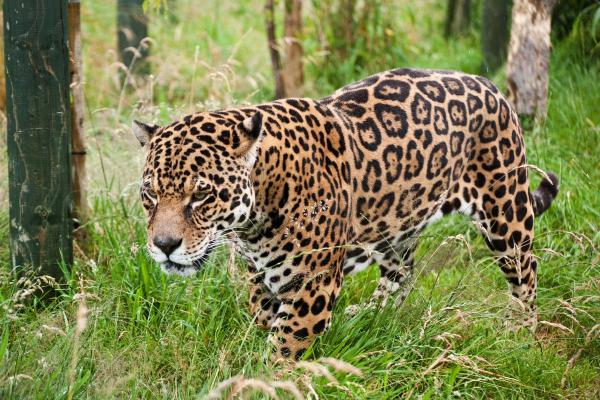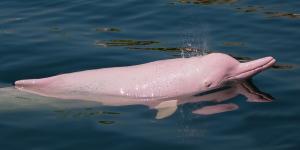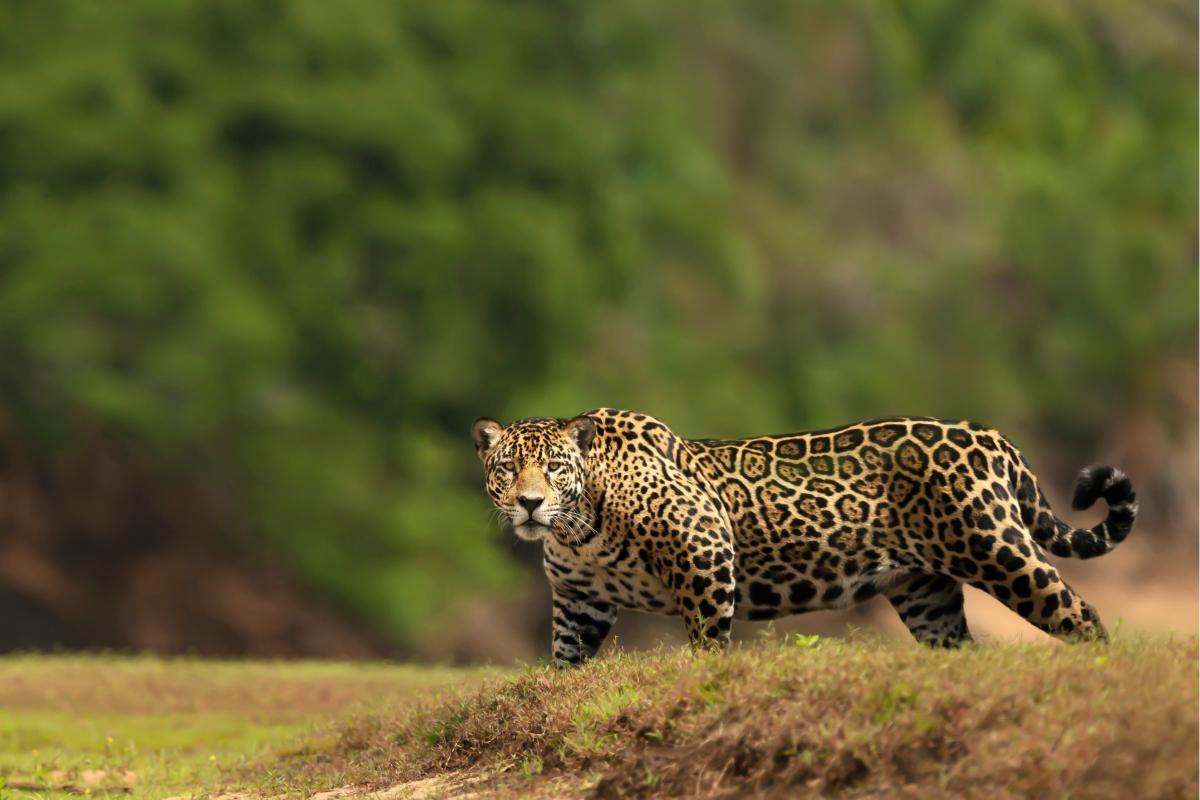Where Do Jaguars Live in the World?


The wild distribution of the jaguar (Panthera onca) was once much larger than it is today. Unfortunately, population decline has occurred over the years. While this has been influenced by natural factors, human interference in jaguar habitats has resulted in a significant impact to the numbers of these apex predators in their respective ecosystems. Specific factors affecting wild jaguar populations include deforestation, climate change and poaching. The result is that we now have a different answer to the question where do jaguars live in the world?
At AnimalWised, we explain more about jaguar distribution and habitat. In doing so, we highlight some of the conservation areas which have been established to protect jaguars against population decline and prevent their extinction.
Where in the world do jaguars live?
The jaguar is a type of felid known as a ‘big cat’, a group that also contains lions, tigers, leopards and others in the genus Panthera. Leopards are the third largest big cat in the world and the largest panther native to America. It is the only current representative of the Panthera genus which lives wild on this continent. The historical distribution of jaguars in the wild includes the following countries:
- Argentina
- Belize
- Bolivia
- Brazil
- Colombia
- Costa Rica
- Ecuador
- El Salvador
- French Guiana
- Guatemala
- Guyana
- Honduras
- Mexico
- Nicaragua
- Panama
- Paraguay
- Peru
- Surinam
- USA
- Uruguay
- Venezuela
This worldwide distribution of jaguars has changed over time. One of the largest threats mentioned in the introduction is habitat fragmentation and destruction. This is often for the expansion of agriculture and livestock. Using this land for farming means destroying the natural ecosystem which allows jaguars to thrive, with the added threat of farmers killing jaguars to protect their livestock.
Hunting jaguars can be for reprisals against killing livestock, but it is often for its own sake. This is because furs and other body parts can be sold on the black market. Others do so for so-called trophy hunting. These threats are multifaceted. Habitats fragmentation also reduces wild prey populations for the jaguar, causing them to prey on livestock, feeding more retaliation by farmers.
This American big cat has been practically extirpated from the United States and only a few stray individuals remain on the border with Mexico. It is also reported as extinct in El Salvador and Uruguay. It has also been eliminated from northern Brazil and the scrub grasslands of Argentina.
Reports indicate that the jaguar has a distribution area of about 9.02 million km², with the current largest population in the Amazon rainforest. This represents 57% of its total distribution area. The last assessment of the species was in 2018 when it was reported by the International Union for Conservation of Nature (IUCN). It was established that the jaguar only occupied 51% of its original distribution area. This is consistent with its current red list classification, which is ‘near threatened’.
Learn more about big cat species under threat with our article detailing the reasons why Bengal tigers are endangered.

Jaguar habitat
The jaguar is found in various types of habitat. This is appropriate considering the large extent of territories it occupies throughout the American continent. In this sense, the jaguar habitat can include:
- Tropical forests
- Marshy areas
- Pampa grasslands
- Thorny scrub forests
- Dry deciduous forests
The preference of this species is associated with tropical lowland forests. When this is not available, they can be seen dry forests, xeric ecosystems and lowland grasslands. It does not usually live in mountain forests. For example, in the Andes it has not been reported at an altitude of more than 2700 m above sea level. Only in a few regions are jaguar populations present at high altitudes.
Largely due to their coat patterns, jaguars are often confused with other big cat species. Learn about the difference between a jaguar, cheetah and a leopard with our related guide.

How do jaguars survive in their natural habitats?
The jaguar requires a habitat with the presence of dense vegetation cover to survive. This can be provided by both primary or secondary forests. It needs constant access to bodies of water. This is for various reasons, including thermoregulation. Since their natural habitats are often very hot, they can cool off in the water. They are excellent swimmers, although they tend to stay in the water only as long as necessary.
Access to bodies of water also affords them greater prey availability. Due to their nutritional requirements, the jaguar must consume animals weighing at least 1 kg. Whenever there is the possibility, they hunt large animals on which they can feed for several days. This helps them to save effort and energy. Learn more about jaguar diet with our related article on what do jaguars eat in the wild?
This felid stands out when compared to other types of felines. When compared to other members of their genus, they are more associated with bodies of water. For this reason, their presence is related to humid tropical, mountainous or deciduous forests where water is most present. Although it is found in some predominately dry areas, they will seek out water sources within them.

Jaguar protected areas
The jaguar is a protected species in most of its distribution area. This means hunting in these places is prohibited. However, Latin America is reported as one of the areas with the highest deforestation rates, something which undoubtedly has a strong impact on the jaguar population. This causes the animal's natural habitat to be reduced considerably. With no home, the individual jaguars cannot survive.
We have already mentioned the countries of the world in which jaguars live, as well as their types of habitat. Conservationists have established certain areas which provide better protection. This means they are protected against deforestation, illegal poaching and other threats to their survival. Some of the most important jaguar conservation areas are the following:
- Jaguar Flora and Fauna Protection Area (Mexico)
- Calakmul Biosphere Reserve (Mexico)
- Napo-Putumayo Corridor (Peru)
- Gueppi-Sekime National Park (Peru)
- Cuyabeno Fauna Production Reserve (Ecuador)
- Putumayo Premises Indigenous Territory (Colombia)
- Apyterewa Protected Area (Brazil)
- Arariboya protected area (Brazil)
- Xingu indigenous park (Brazil)
- Terra do Meio Ecological Station (Brazil)
- Mapinguari National Park (Brazil)
- Guatopo National Park (Venezuela)
- Ciénaga del Catatumbo National Park (Venezuela)
- Santos Luzardo National Park (Venezuela)
- Aguaro-Guariquito National Park (Venezuela)
Due to the population decline of the jaguar and its classification as near threatened, a recovery project was proposed years ago. This consists of the creation of a corridor of protected habitats so that this animal can move more safely. Although the legislation for protected areas in Latin America has been established, it is often ineffective. Illegal hunting of jaguar continues to be prevalent in many of these areas.
In addition to big cat animal species, you can learn about other felines with our article on types of wild cats from around the world.
If you want to read similar articles to Where Do Jaguars Live in the World?, we recommend you visit our Facts about the animal kingdom category.
- Quigley, H., Foster, R., Petracca, L., Payan, E., Salom, R. & Harmsen, B. 2017. Panthera onca (errata version published in 2018). The IUCN Red List of Threatened Species 2017: e.T15953A123791436. https://dx.doi.org/10.2305/IUCN.UK.2017-3.RLTS.T15953A50658693.en.
- Jedrzejewski, W., Abarca-Medina, MR, Boede, EO, Hoogesteijn, R., Isasi-Catalá, E., Carreño, R., ... & Carrillo, MP (2015). Jaguar, Panthera onca. Red Book of Venezuelan Fauna. Fourth edition. Provita and Fundación Empresas Polar, Caracas, Venezuela., Retrieved from: www.especiesamenazadas. org/taxon/chordata/mammalia/carnivora/felidae/panthera/jaguar
- Rodríguez, JP, & Rojas-Suárez, F. (1995). Red book of Venezuelan fauna. Caracas, Venezuela: Provita.
- Nogueira, J. (2009). Panthera onca. Animal Diversity Web. Retrieved from: https://animaldiversity.org/accounts/Panthera_onca/








